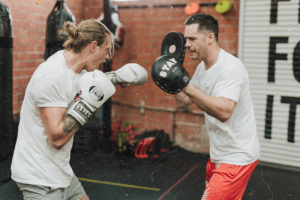Most Recent News


Popular News




A simple and easy-to-follow guide to get you started with fasting. We take a look at the benefits of fasting, the 16:8 method, the 5:2 method, and the Alternate Day method. This simple guide to intermittent fasting will help you choose a method and provide a few personal tips I learned while fasting.
 Lent is here. Easter (or Pascha, for my Orthodox brethren) is rapidly approaching. As per tradition, most Christians are encouraged to give up something this season. It’s not just a way to enact pointless suffering, but a mission with deep spiritual significance.
Lent is here. Easter (or Pascha, for my Orthodox brethren) is rapidly approaching. As per tradition, most Christians are encouraged to give up something this season. It’s not just a way to enact pointless suffering, but a mission with deep spiritual significance.
Fasting is also normally discussed during this happy time. Normally, a lot of the common fasting traditions are more involved in avoiding meat, specifically on Fridays for Catholics.
Now, I’m not here to convert you. But I figured it would justifiably be a good time to write about a topic dear to my heart: intermittent fasting.
Most important, I’d like to discuss the three most common ways to fast. The Alternate Day Method, 5:2 Method, and the 16:8 Method.
These aren’t just tied with religion. In fact, as you read through this article you’ll see that they can actually be enormously beneficial health wise (and for your waistline).
So regardless of your reasoning behind the fast, whether it is spiritual or health, I definitely encourage you to at least give one of these a try for a month if you never have before.

(Please feel free to share this infographic on your own social media/website if you would like.)

As with any benefits, we need to warn of the potential side effects:
A few common points to address about fasting in general are:
Now that we have the basics down, let’s get into the top 3 methods of intermittent fasting.
The 16:8 method is the most common form of intermittent fasting (“IF”).
In this method, you have a “fast” for 16 hours, and a “feast” for 8 hours. Meaning you limit the amount of time you eat to 8 hours only every day.
Normally, this method involves skipping breakfast.
As an example, I have used this method in the past. I would usually put my time frame at 11:00AM to 7:00PM (1100-1900 mil time).
This meant any time after 7, or before 11, I would not eat anything.
I pretty much just eliminated breakfast altogether and ate 2 meals: a brunch at 11:30ish and dinner around 6.
This is the most common because it is really easy to stick to. It’s a lot more forgiving and a lot less stressful than trying some of the more ‘extreme’ fasts. Pretty much anyone could stick with this program if they actually put forth a little effort.
It also likely corresponds to how our ancestors ate. They hunted/gathered once or twice a day and then ate that food. So it brings us a bit closer to the evolutionary pressures that evolved alongside us.
You can also be a bit more strict with this method if you desire to. Instead of having an 8 hour feast window, you could narrow it to 6 or 4 hours. Then you increase the fasting time.
This can happen just out of necessity sometimes. Many times, I wouldn’t get around to eating on my 11-7 routine until 2 or 3, effectively meaning I fasted for 20 hours prior.
It’s up to you how you structure it, but if you’re looking for a gentle way into fasting before going to the extreme ends, definitely give the 16:8 method a try.
This method is simple: 5 days of the week you eat normally. 2 days you eat 20%-25% of your normal calories.
This normally amounts to about 500-600 calories for men and 400-500 for women on fasting days. 
You can do the days whenever you prefer, just make sure they are non-consecutive (IE: Don’t eat 500 calories two days in a row).
This is the method I am currently doing for Lent. I fast on Mondays and Thursdays (550 calories those days) and eat regularly every other day of the week (about 2100 calories w/ exercise). I also workout every day besides Mon/Thurs.
I’m not going to say this is easy, because then I’d be straight-up lying to you all. It was hard when I first started this fast. The Mondays and Thursdays were like nightmares for the first two weeks. But slowly, it just became normal. It doesn’t even bother me now.
A tip for any of you that may try this: consume all your calories on your fast day at the same time, later in the evening. A decent sized meal of 550 calories at 6PM goes a lot longer and feels a lot more fulfilling than numerous snacks throughout the day. No matter how tempting the snacks are, they never fill you up and only serve to make it seem much worse.
That was my experience anyway, your mileage may vary.
I’ve been on this one for two months now and have lost almost 20 lbs. (I’m back down to my goal, ~200 lbs.) But I will be going the rest of Lent on this fast, as it’s more spiritual than health-related to me. I’m just increasing my calories enough on feast days, so I don’t continue losing weight, and it seems to have subsided once I did that. Remember: weight loss is all about calories in vs calories out.
So you did the 5:2 method and want to make yourself suffer even more? Well, we’ve found the perfect IF solution for you: The Alternate Day Method.
This is an even more severe version of 5:2. One day, you eat normally. The next day, you eat 20%-25% of your normal calories (400-600 calories a day). Then you eat normally again. Then you eat restricted calories again. Ad infinitum.
As you can see, the name is very descriptive. You just alternate days. One fasting day, one non-fasting day.
So instead of having 5 days of normal eating like the 5:2 method, it boils down to 3 or 4 normal calorie days (depending on the week). You have an equal amount of fasted days, and an equal amount of normal eating days.
This method has been highly recommended and discussed/researched, and does have many benefits out of the fasting regimen options. However, I have not done it (and will not be doing it) so I can’t comment on it too extensively.
It seems like it would be the go-to option for someone significantly overweight that wants to get serious about losing weight. At my current stage, I don’t want to keep losing weight and I like food too much so this one will be a no for me.
But if it sounds convincing to you, or you want to take 5:2 a step further, I say go for it. Can’t hurt to try it out for a couple of weeks.
To give a little backstory, Mark Mattson is the current Chief of the Laboratory of Neurosciences at the National Institute on Aging. He is also a professor of Neuroscience at The Johns Hopkins University.
Mattson is one of the foremost researchers in the area of cellular and molecular mechanisms underlying neurodegenerative disorders such as Alzheimer’s Disease, Parkinson’s Disease, and amyotrophic lateral sclerosis.
Dr. Mattson is the most highly cited neuroscientist in the world, and the 41st most-cited author of all time according to the ISI information database.
In this video, he specifically talks about the benefits of fasting. Particularly, he focuses mostly on the 5:2 method we discussed above.
Give it a watch. If I haven’t convinced you to try intermittent fasting yet, maybe a genius will.

Check out another one of my related articles:
How To Get In Shape: A Guide on Physical Fitness and Exercising
(Learn More About The Dominion Newsletter Here)